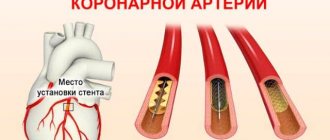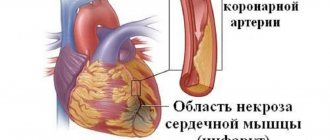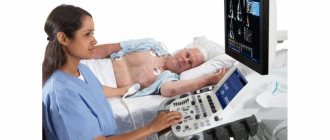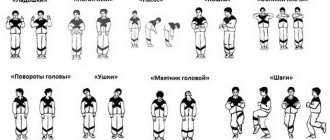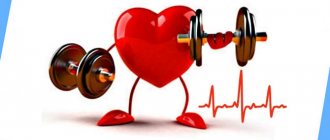All patients after an acute coronary circulatory disorder must undergo a period of rehabilitation. It is divided into three stages - hospital, sanatorium and clinic. In the future, it is recommended to maintain the achieved level of physical activity independently throughout your life.
Successful completion of all stages of recovery makes it possible to increase performance, increase the resistance of the myocardium to stress, as well as improve psychological well-being, and return to previous social and family contacts.
Goals of exercise therapy after a heart attack
After myocardial infarction, therapeutic exercises are subject to certain goals:
- Training the heart muscle and vascular tone;
- Activation of the respiratory system;
- Restoring the regulation of the nervous and hormonal systems;
- Improving the functioning of the excretory system.
Also, a physical set of exercises at the rehabilitation stage after myocardial infarction solves the following problems:
- Expand the arteries and prevent their spasms;
- Improve blood circulation and nutrients in the myocardium;
- Activate blood flow in the periphery of the limbs;
- Adapt the heart muscle to hypoxia (reduce its oxygen demand);
- Reduce the body's response to adrenal hormones;
- Prevent post-infarction complications from developing;
- Allow the patient to return to previous household and professional loads;
- Eliminate risk factors for heart attack recurrence.
The main goal of carrying out exercise therapy after myocardial infarction is to improve the patient’s quality of life, as well as to prevent relapse of the disease.
Prevention of heart attack and stroke
To prevent such serious pathologies, you need to take care of your lifestyle on an ongoing basis. Proper nutrition, giving up bad habits, and constant blood pressure monitoring are important. Physical activity also plays a role. Loads should be reasonable and moderate. Special exercises to prevent stroke and heart attack will help significantly reduce the likelihood of these problems. Those who are at risk are advised to select types of activity especially carefully. This should be done together with a specialist.
Exercises to prevent heart attack and stroke can be seen in the following videos.
Contraindications for exercise therapy
The importance of physical therapy for heart disease is difficult to overestimate. However, not everyone can use it during the rehabilitation period.
It is prohibited for patients who have the following health problems to engage in therapeutic physical activity:
- Severe stage of circulatory pathology;
- Increased heart rate (more than 110 beats per minute at complete rest);
- Labored breathing;
- Swelling of the lungs;
- Changes in heart rate uncontrolled by medications;
- Cardiogenic shock;
- Severe pain in the heart area;
- Elevated body temperature and blood pressure;
- Poor ECG results.
Note!
Any ailment should be regarded by the patient as a contraindication to training.
Classification of severity of condition
Myocardial infarction occurs when a blood clot or atherosclerotic plaque blocks the lumen of a coronary vessel. Persons suffering from atherosclerosis and chronic coronary insufficiency are at increased risk.
Characteristic symptoms of a heart attack are acute, sharp pain, significant deterioration in general condition: suffocation, weakness, fever, drowsiness. Pain sensations are localized in the heart area and can radiate to the epigastric region or between the shoulder blades.
According to WHO, there are four functional classes of severity of the condition of patients who have suffered a myocardial infarction:
- I – pain appears only during heavy physical exertion. The usual ones - walking, climbing stairs - do not cause discomfort.
- II – pain occurs during walking, climbing stairs, emotional stress, after waking up. The patient's movements are somewhat limited.
- III – pain appears even when walking on level ground for short distances (200-400 m), while climbing stairs to one floor. Motor activity is noticeably limited.
- IV – pain occurs even with the slightest load, the patient is unable to perform normal work. This class includes patients with severe complications of the post-infarction state: angina pectoris, heart failure, cardiac arrhythmia, conduction disturbances, infectious or non-infectious endocarditis.
Treatment of myocardial infarction is complex. Along with medications, therapeutic massage and gymnastics are prescribed.
When to start classes
The time when the patient should begin physical therapy is determined by the doctor. In his decision, he relies on the following factors:
- The severity of the patient's condition;
- Patient's age;
- Gender;
- Features of the course of the disease;
- Degree of physical fitness.
Note!
3-4 days after the attack, any physical activity is prohibited!
After the fourth day of rehabilitation, the doctor consults with the patient, assesses his condition and makes a decision on prescribing a complex of therapeutic exercises. At the initial stage, recovery is carried out while the patient is still in a supine position.
The timing of active exercise depends on how many times a person has had a myocardial infarction. If an attack occurs for the first time, active training begins within a month. After a second heart attack, classes are resumed only 5 weeks after the attack.
Therapeutic exercise in patients with myocardial infarction complicated by heart failure
In 2002
a rehabilitation program for patients with myocardial infarction complicated by heart failure has been developed, tested and proposed for use in addition to the existing scheme. Contraindications to the use of the program are: heart failure of class III and higher according to Killip, aortic stenosis above moderate, acute systemic disease, uncontrolled ventricular or atrial arrhythmia, uncontrolled sinus tachycardia above 120 beats/min, 3rd degree AV block without a pacemaker, active pericarditis or myocarditis, embolism, acute thrombophlebitis, diabetes mellitus, defects of the musculoskeletal system that make it difficult to exercise.
In the classical scheme, changes in motor patterns are based on the disease calendar and the dynamics of clinical data and ECG parameters. Bicycle ergometry in the early stages (5-10 days) from the onset of the disease can be performed only in a small number of patients, with a small area of damage to the heart muscle and without severe complications.
In patients with transmural myocardial infarction, which occurs with complications, bicycle ergometry is impossible at such an early stage. In order to individualize and more flexible control of the patient’s motor mode, as well as stimulate functional reserves, after determining the severity class of the patient’s condition, the program provides for simple functional tests.
In order to comply with the principle of adequacy and safety of the testing load, simple functional tests are performed in strict sequence. Only after receiving an adequate response to the previous, simpler test do they move on to the next one. Test order: apnea test, hyperventilation test, semi-orthostasis, 6-minute walking test (Table 9).
For example, as a result of the patient’s initial functional testing, data is obtained that allows him to determine his motor mode above the first stage. Then, in therapeutic exercises, on the 1st day a complex of motor mode 1a is used, on the 2nd day - a complex of motor mode 16, on the 3rd day - a complex of motor mode 2a, respectively, under the control of blood pressure and heart rate data.
Table 9. Parameters of physical activity and oxygen consumption in patients with different functional classes of chronic heart failure
| Functional classes of CHF | 6-minute distance (m) | Oxygen consumption (ml/min/sq.m) | |||
| 0 | >551 | >22,1 | |||
| 1 | 426-549 | 18,1-22,0 | |||
| 2 | 301-25 | 14,1-18,0 | |||
| 3 | 151-300 | 10,1-14,0 | |||
| 4 | |||||
In case of inadequate reactions of the cardiorespiratory system to the proposed load, the patient engages in a complex of therapeutic exercises at a lower functional level until an adequate response is achieved.
The selected mode guarantees the performance of any movement in the zone of aerobic exercise, which eliminates the risk of developing overexertion in a patient with MI and allows developing the endurance of the patient’s body.
A distinctive feature of the proposed LH complexes is that breathing exercises are in the nature of basic exercises. Regulating the depth and frequency of breathing has a powerful systemic effect on the body.
It is the breathing exercises that determine the amount of physical activity and allow you to regulate the sequence, pace and duration of movements in the peripheral joints in various starting positions.
A rational combination of dynamic and static exercises used sequentially for small, medium and large muscles of the arms and legs, synchronization of movement with a certain phase of breathing is an effective method of individual selection of physical activity in patients with acute myocardial infarction in the early stages of the hospital stage of rehabilitation, corresponding to all the basic principles of rehabilitation treatment.
The objectives of rehabilitation treatment in the early stages
of myocardial infarction are:
a) restoration of normal breathing patterns;
b) a rational combination of the respiratory stereotype with the stereotype of the body’s reaction to the initial position of the body;
c) rational combination of respiratory function with increasing the level of tolerance of the patient with MI. The activating techniques of therapeutic exercises are based on the following breathing exercises: a) exercises with “open” exhalation resistance improve bronchial clearance, increase tidal volumes and prevent bronchial collapse;
b) breath-holding exercises increase the tolerance to hypoxia by increasing the metabolic adaptation of the body and the myocardium (warm-up phenomenon), and increase resistance to subsequent ischemia;
c) exercises with changing the duration of breathing phases increase the efficiency of oxygen consumption from the same volume of inhaled air, the tolerance of hypoxia, and also stabilize reflex reactions from the respiratory center to the vasomotor center.
Walking in training mode
Walking in training mode is considered the safest physiological method of rehabilitation of patients with myocardial infarction within the framework of the free regime of the hospital stage.
Walking is a form of physical activity (PA), accessible to almost everyone, easily dosed by determining the distance, pace and time to overcome it. Active walking
- a complex process in which all parts of the central nervous system participate; it helps to normalize impaired vegetative functions of the body, since it causes functional and trophic changes in all organs and tissues, especially in the cardiovascular system. The most effective use of a treadmill is when dosing training with walking.
In the ward motor mode, after carrying out appropriate tests in patients with uncomplicated MI, dosed 3-6 minute walking is used within the ward at a pace of 30-40 steps per minute under the control of pulse rate, blood pressure and subjective state. If the patient responds adequately to the proposed volume of load, the walking pace increases to 40-60 steps per minute.
With proper activation of the patient, the increase in heart rate at the height of the load does not exceed 12 beats per 1 minute, breathing - 6-9 per 1 minute, the level of systolic pressure increases no more than - 20-40 mm Hg. Art., diastolic - 5-10 mm Hg. Art.
The occurrence of an attack of angina pectoris, arrhythmia, severe shortness of breath, tachycardia with a slow return to the initial heart rate, a drop in blood pressure, severe weakness, pallor, acrocyanosis indicate an unfavorable reaction to physical activity.
In free motor mode, the walking pace is 70-80 steps per minute. When a stable adequate response of the cardiovascular system is achieved, the walking time increases and, accordingly, the distance covered at a given pace from 500 m to 1000 m, 1500 m. Then walks on the street for a distance of 23 km in 2-3 steps. At the next stage, the walking pace increases to 80-100 steps per minute.
For patients with myocardial infarction complicated by heart failure, measured walking is carried out at a freely chosen pace (usually the most comfortable walking pace is 40 steps per minute) for 6 minutes. In this case, the distance traveled is recorded in accordance with the above scheme.
Clinical data is supplemented by data from ECG monitoring or stress testing.
To dose training loads, the threshold heart rate is determined and the working heart rate is calculated in the range from 60 to 90% of its threshold value. Training begins the day after testing and is carried out daily until discharge from the hospital. Treadmill training is carried out on the principle of gradually increasing load without rest intervals, until a stable heart rate is achieved at each load level.
If the patient’s tolerance to the training load is noted, then the power of the next workout is reduced to the previous level. The goal of training is to achieve a stable response of the cardiovascular system to the applied load, and not to cover a certain distance.
At the end of the treadmill training course, a control test with physical activity on the treadmill is carried out. The use of measured walking is also possible using specially prepared routes under mandatory monitoring of heart rate and blood pressure.
Stages of rehabilitation
The rehabilitation period after myocardial infarction is conventionally divided into 2 stages:
- Hospital treatment;
- Home recovery.
During treatment in a hospital, taking medications comes to the fore. Then gentle physical activity is gradually introduced. Exercises are selected “in doses”, since after a long stay of the body in a static position, it becomes detrained.
Inpatient treatment is characterized by the patient sequentially going through 4 stages, each of which has its own load intensity.
- Stage 1 – adherence to strict bed rest. Classes begin with breathing exercises, then “include” minor physical activity. The duration of the workout is 10 minutes. Before and after training, blood pressure and heart rate are monitored.
- If the indicators are normal for a certain time, proceed to the second stage of training. At this time, the patient is shown walking around the ward and along the low stairs, accompanied by a medical worker. It is allowed to eat at the table. Exercise therapy classes are carried out in a sitting position.
- If blood pressure and pulse are good after training, they begin the 3rd stage of rehabilitation. It includes walking along a corridor up to 200 meters, slowly climbing one flight of stairs. The treatment complex includes exercises that are performed while standing, gradually increasing the load, intensity and duration of the workout. During this period, telemonitoring is used to monitor the patient’s condition.
- On 4 steps you can hike up to 1 km. They walk twice a day. Physical activity increases, spreading to the back and limbs. After completing the final stage of inpatient treatment, the patient is prepared for transfer to a sanatorium or home recovery.
The goal of the second rehabilitation stage of exercise therapy for myocardial infarction is to strengthen the heart muscle and improve blood flow throughout the body. Classes are held in a sanatorium, at home or in special rehabilitation centers.
Regardless of where the second stage of recovery is carried out, continue to monitor heart rate and blood pressure before and after training.
After completing the final stage of rehabilitation, the following objectives should be achieved:
- Increased physical activity;
- The patient is adapted in everyday and professional terms;
- Secondary prevention of heart failure was carried out;
- All vital signs improved;
- The dosage of medications taken has been reduced.
Breathing exercises
During the recovery period after myocardial infarction, the use of breathing exercises is of great importance. This method of treatment should not be underestimated, because a carefully selected load has a positive effect on the healing process and facilitates rehabilitation.
Breathing and using the diaphragm:
At the same time, experts warn that you should not get too carried away with such activities, since the wrong approach to therapy can cause considerable harm to the body, provoke an increase in blood pressure and lead to overload of the joints.
There are specially created sets of exercises for patients who have had a heart attack. These activities enrich the heart and blood vessels with oxygen, and also bring the desired relief to a person.
A set of physical exercises
After a heart attack, exercise therapy exercises are prescribed on an individual basis. Let us give an example of 2 frequently encountered complexes.
- Complex No. 1
The starting position for exercises 1-4 is the same: stand straight with your feet shoulder-width apart and your arms down along your body.
- Take a deep breath and raise your arms behind your head. Reach for them, feel the muscle tension. Exhale and, making a circle with your hands, lower them.
- Place your hands on your waist, take a deep breath and squat down. As you exhale, rise up.
- Sit down, taking a deep breath. Place both hands behind your back, while leaning your body forward. Exhale and rise up.
- Tighten your chin muscles and, as you inhale, lift your head up until the back of your head touches your back. Stay in this position for 3-5 seconds and, as you exhale, return to the starting position.
- Sit on a chair, stretch your legs, and grab the edge of the seat with your hands. As you inhale, slowly arch your back, throwing your head back. Exhale and sit up straight.
- Stand straight with your feet so that your toes point in different directions. Place your hands on your waist. As you turn to the right, spread your arms wide. Returning to the starting position, place them on your waist. Repeat the turn to the left.
Each exercise is performed 5-7 times.
- Complex No. 2
- Sit on a chair with your arms at your side. Inhale and raise your shoulders as high as possible. As you exhale, lower them.
- While sitting on a chair, place both hands on your head. “Helping” with your hands, tilt your neck to the right, then to the left.
- Stand with your hands on your shoulders. Straighten your back. Begin slow circular movements with your elbows, first in one direction, then in the other.
- Place both hands on the back of your head, clasping them together. Make consistent head tilts to the right, forward, left and back, fixing each movement for 2-3 seconds.
- Place your arms behind your back, placing one hand on top of the other. Changing the position of your hands (first the right hand on top, then the left), pull your arms down, feeling the tension in the muscles of your back and shoulders.
- Extend your left arm, palm down. Place your right hand on top and grab your little finger. Slowly and methodically pull your finger toward you 8-10 times. Do this manipulation with each finger. Switch hands.
All exercises need to be performed 5-7 times.
The doctor recommends adding breathing exercises to each complex.
- Inhale and hold your breath until you begin to feel discomfort;
- Slowly inhale and exhale air;
- Take air into your lungs and blow it out through a straw into a glass of water.
For bedridden patients
Physical therapy classes begin with these exercises after a heart attack. They are used only for bedridden patients.
- Inhale air deeply 3-4 times, using the entire volume of the diaphragm;
- Clench your fingers into a fist as quickly as possible and unclench it just as quickly. Perform the exercise 9-10 times;
- Rotate your feet up to 5 times;
- Bend your elbows 5 times on each arm;
- Bend each leg 5 times at the knees;
- With the help of a medical professional, raise the pelvis 3 times.
After performing these exercises, take a break for 5-10 minutes to restore breathing and heart rate. Continue training with the following exercises:
- Bend your knees without lifting your feet off the bed. The knees are moved apart and moved 4 times;
- Straighten your arm and extend it to the side, then return it to its original position. Do the exercise 5 times with each hand.
- The instructor helps you roll over on each side 3 times.
- Rotate the hands of each hand 5 times.
When starting exercise therapy, you should remember that any overwork is unacceptable. As soon as you feel discomfort or fatigue, you should stop training.
Rules and features of exercises
For each stage of patient rehabilitation, its own exercise program is developed. They should be done gradually. At first, a slow pace and no more than three repetitions are recommended. The general course of study involves the following stages:
- The first trainings are carried out in a lying position. After some time, the physical activity increases, the joints and pelvis are involved in the work, and then the lower limbs.
- Gradually the complexity of the exercises increases. The shoulders are involved, the patient is recommended to raise the hip part and turn to the side. The number of repetitions also increases. It should be about 10 times.
- This is followed by exercises in a sitting position. Most of them help strengthen the lungs and promote the work of the trunk muscles. Such exercises are performed at least once a day for 15 minutes.
- The next stage is preparation for independent movement. Since the patient was in a supine position for quite a long time, he should prepare before getting to his feet. We are talking about exercises that simulate stepping and standing up. Every day you need to increase the number of steps. The task is completed when the patient can walk about 50 meters.
Even after fully recovering and returning to a full life, the patient must perform exercises for some time. A systematic visit to a specialist will allow you to monitor the rehabilitation process and prevent relapse of the disease.
What's next?
As soon as the patient is lifted from strict bed rest, he can begin to gradually return to normal activities. The further stage of rehabilitation is conditionally divided into several periods:
- Stationary (hospital) mode. It is characterized by the patient’s adaptation to the usual everyday loads, which do not require significant effort from him. The patient is recommended to perform simple activities, walking up the stairs and massage treatments will be useful. It is very important to monitor the increase in heart rate during this period, which should not increase by more than 20 beats per minute.
- Post-hospital regimen. This is further rehabilitation carried out in sanatorium conditions or specialized cardiology centers. The main goal of this stage is to restore the cardiovascular system and increase its potential. The patient should be aimed at obtaining maximum activity levels, adapting to both domestic and professional stress. Exercise therapy, exercise equipment and some sports games are mandatory.
- Supportive mode. Involves the patient's stay in specialized sanatorium-type institutions. During this period, the patient’s omnidirectional physical development continues and relapse prevention is carried out. A person must actively perform a set of gymnastic exercises. We recommend games that do not involve heavy loads.
To each his own
Even after a heart attack, you should not give up on movement. After all, correctly chosen physical activity is one of the important conditions for recovery. It is not for nothing that while still in a hospital bed, patients, under the guidance of a doctor, begin to perform various exercises, then walk around the ward. And after discharge they are sent to exercise therapy rooms at clinics or sanatoriums. Therapeutic exercise for diseases of the cardiovascular system strengthens the heart muscle, increases its contractility, increases blood circulation, reduces cholesterol levels, and reduces the risk of blood clots. Good blood flow massages the walls of blood vessels, making them more elastic. All this is an excellent prevention of vascular atherosclerosis, the main cause of heart disease.
By the way, it has been proven that if you perform therapeutic exercises for a year after a heart attack, the mortality rate in the first year is reduced by 25%!
As for playing sports for those who have suffered a heart attack, a strictly individual approach is necessary, otherwise a new attack can be provoked. The statistics are inexorable: 70% of recurrent heart attacks occur within 3 years after the first. Therefore, there is no need to argue with doctors: what motor regimen they recommend is what you need to follow. Depending on the degree of heart damage, for some patients the doctor may allow moderate exercise shortly after discharge from the hospital, while for others he will strictly prohibit even walking at a fast pace.
When choosing a training regimen, you should not rely on your own well-being, because this is a biased indicator. Thus, according to a study by scientists from the Kyiv Institute of Medical Problems of Physical Education, 14% of recreational joggers who never complained of heart problems were found to have serious myocardial problems, which were revealed only during a medical examination.
What should you pay attention to?
In the video, charging after a heart attack at home is not particularly difficult. But to get a positive result, the patient will have to pay attention to some nuances. Regardless of the set of exercises, to perform them correctly, it is recommended to follow the following expert advice:
- Physical activity after a heart attack should increase gradually. Even if the patient feels well, and it seems to him that he can skip several stages of exercise, he should increase the intensity of the exercises in accordance with the treatment plan.
- It is recommended to start restorative exercises no earlier than a few hours after eating.
- If discomfort occurs during or after training, exercise should be stopped. We are talking about dizziness, arrhythmias, shortness of breath. If the pain does not go away over time, it is recommended to use Nitroglycerin. After this, you need to visit a doctor as soon as possible.
- For elderly patients suffering from osteochondrosis of the cervical spine, which has developed against the background of atherosclerosis, bending “below the heart” is prohibited. Otherwise, a sudden rush of blood to the brain may occur. Any rotational movements performed by the head and torso, as well as strength-type exercises after a heart attack at home, are undesirable.
Rehabilitation after cardiac stenting
The benefits of sports during rehabilitation after stenting.
Physical therapy complex and nutrition. Contraindications and expert advice. A little more than a century ago, doctors widely recommended abandoning physical activity during rehabilitation after stenting of cardiac vessels. Patients were prescribed bed rest for two months without the ability to move even around the apartment. However, at the moment the situation has changed dramatically.
Studies have shown that earlier restoration of physical activity promotes a speedy recovery and also reduces the risk of another heart attack.


